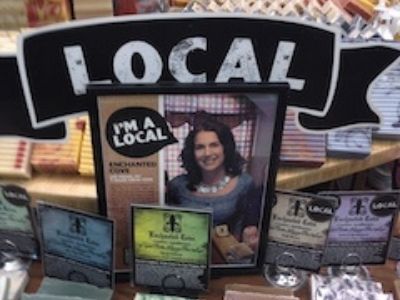
Online Direct Sales: Part 2
Today’s blog is the second in a four-part series on options and strategies for online direct sales of local farm products. In this edition, I will focus on online stores, sometimes referred to as an online marketplace, online farmers’ market, farm stand, food hub, or coop.
Online stores have direct marketed local foods for several years. Online stores handle all customer accounts, payments, and communications online, and thus, they are well suited for today’s climate. Both farmers and consumers are flocking to online stores as described in a recent article “The Local Food Revolution Goes Online – For Now.” A second article “Direct-to-consumer sales heat up for farmers” discusses how several farmers have shifted to fulfilling the increased consumer demand for local foods.
Most online stores provide customers the opportunity to purchase a wide variety of products, such as fresh produce, meats, cheeses, eggs, flour, jams/jellies, etc. On occasion, the store may require customers to purchase a specific box or basket of goods, like a CSA program (see previous blog on CSA sales). The need to provide variety often requires sourcing from a number of farmers and ranchers in the area or even across a large region. For example, an online store in northern Utah may offer citrus fruit from growers in southern Utah. Customers are often required to make a minimum purchase or pay an additional fee for home delivery. However, individual growers do sell products through their own website, or have set up their own online store, so that is definitely an option if joining an established online store isn’t for you.
There are a number of online store models, as well as software platforms available. The Farmer’s Guide to Direct Sales Software Platforms, created by the National Young Farmers Coalition, provides a comprehensive overview of each, including questions to consider in terms of resources, and software platforms that may be suitable. It also outlines the cost of each online platform, as well as services each offers in terms of data collection, distribution planning, transaction and payment assistance, sales tracking, etc. Oregon Tilth has an online webinar series, “Online Sales Platforms for Farmers.” They also have a list of suggested questions to ask when starting online sales and have had five online sales platforms provide answers to those questions for their specific platform at: https://tilth.org/education/resources/questions-for-considering-online-sales-platforms-for-farms-direct-marketing/.
In Utah, several online store options for local food sales have existed, but not all are currently running, and others have had limited success. For a directory of farms, food producers, and others selling online, see the Utah’s Own website. Additionally, select grocery outlets such as Lee’s Marketplace, Winder Farms, Macey’s, Smith’s, Caputo’s Market and Deli, and Harmons, to name a few, purchase products from local farmers and ranchers and also provide pick-up and delivery service to their customers. Starting or increasing sales to these grocers in another option for entering the online sales arena, but this would be considered a wholesale, rather than direct outlet. Grocers limited by their current supply chain may be looking for local vendors.
That is all for now. Next week I will discuss using social media such as Facebook, Twitter, and Instagram for local food sales and promotion. Please see an updated list of resources below.
Stay healthy!
Kynda Curtis, USU Extension Ag and Food Marketing Specialist
kynda.curtis@usu.edu
Marketing In Motion Blogs
Online workshops, courses, webinars, and podcasts:
- Oregon Tilth Webinar Series
- C-FARE Webinar on E-Commerce During COVID-19: Opportunities for Food Producers to Make Direct Market Sales Online
- The University of Vermont Cultivating Healthy Communities Webinar Series
- Purdue Women in Agriculture Webcasts
Other resources:
- USU Extension COVID-19 Direct Market Farm Resources
- eExtension Local Food Resources
- USDA Coronavirus Food Assistance Program
- UDAF Utah’s Own Program
- Taxes and Federal Programs
- Salt Lake City Food Access Resources

